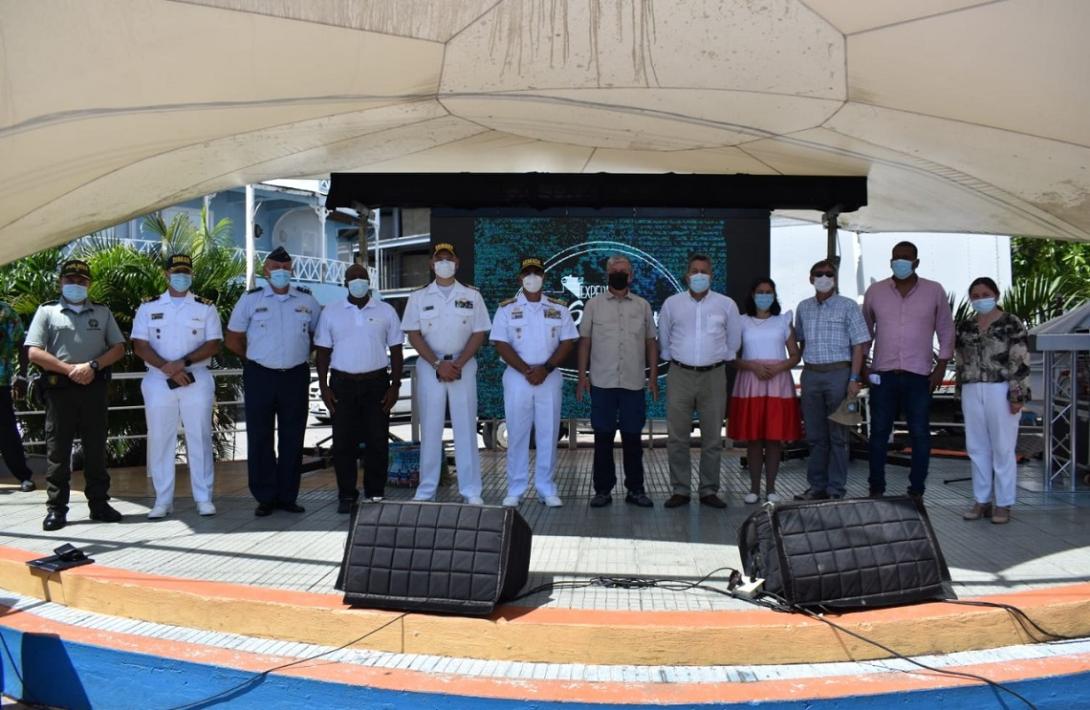The expedition will identify a list of priority areas for restoration, recuperation and recovery after the transit of hurricanes ETA and IOTA.
With the aim of updating the maps of coverage of ecosystems, both in the emerged and submerged environment of the Archipelago of San Andrés, Providencia and Santa Catalina, the Seaflower Plus 2021 Expedition began on Monday. The launch ceremony was held in the Square of the Morgan Canyon in San Andrés.
This initiative of the Vice-president of the Republic, coordinated through the Office for the Colombian Ocean and the Ministry of Environment and Sustainable Development, seeks to generate scientific information, which serves as a support for decision making in environmental planning, knowledge tending to identify areas with potential for the establishment of new areas of the National System of Protected Areas, Sinap (in Spanish), as well as complementary strategies of conservation.
“Given that the archipelago of San Andrés, Providencia and Santa Catalina is an environment in which the convergence of a biological and cultural diversity, unique in the world that represents 8% of the national territory, we decided to evaluate the impact caused by the hurricane Iota in this natural heritage for clarity on the current conditions of the ecosystems and coral reefs, as well as all the damages. This expedition will led us to safeguard and give sustainable use to our seas and coasts, always guaranteeing the well-being of the communities,” said Vice President and Foreign Minister Marta Lucía Ramírez, who in the same way chairs the Colombian Ocean Group, CCO.
Vice president Ramirez in the same way highlighted the concrete commitments and operations that will be generated in the short and medium term, in order to strengthen technically and financially the National Plan of marine Scientific Expeditions (PNEC), created in 2014, with a comprehensive vision and ambitious goals such as turning Colombia into a bio-oceanic power in 2030.
This scientific work built by the Ministry of Defence through the Navy of Colombia and the Directorate-General Maritime, Dimar, the Ministry of Environment and Sustainable Development, through Invemar, Humboldt, Ideam, and Coral, and the Ministry of Science, Technology and Innovation, will have two components: land and sea, the latter will cover the Keys of Serrana, Roncador and Quitasueño, which will complement the research in the Scientific Expedition Seaflower 2021-II, in the months of November and December, in the Islands, Cays Bajo Nuevo and Bajo Alicia; covering 70% of the Department's reef areas in the same year.
In this regard, the Commander of the Specific Command of San Andres and Providencia, rear Admiral Hernando Enrique Mattos Dager, highlighted the commitment with the environment of the members of the Army, the Air Force and the Navy of Colombia who are working for the safety and well-being of the islanders, residents and tourists of the archipelago, as well as the more than 76 institutions-governmental and non-governmental year after year, to support the Expeditions Seaflower.
It is important to note that the scientists and researchers who are part of the field component began their activities from September 4 and will continue until the beginning of November. For the maritime component, the ship ARC Providencia is scheduled to sail with the personnel in charge of these activities on October 28.





